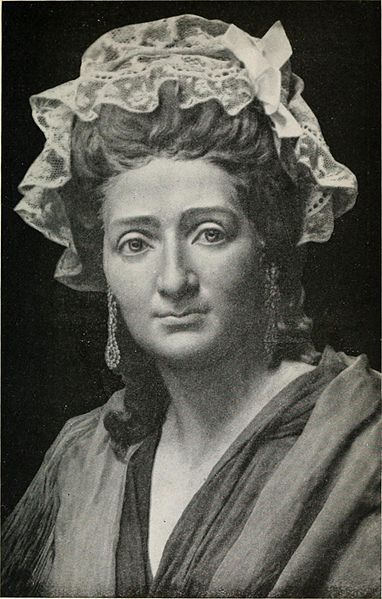1902 Encyclopedia > Wax Figures
Wax Figures
WAX FIGURES. Beeswax is possessed of properties which render it a most convenient medium for preparing figures and models, either by modelling or by casting in moulds. At ordinary temperatures it can be cut and shaped with facility; it melts to a limpid fluid at a low heat; it mixes with any colouring matter, and takes surface tints well; and its texture and consistency may be modified by the addition of earthy matters and oils or fats. When molten, it takes the minutest impressions of a mould, and it sets and hardens at such a temperature that no ordinary climatic influences affect the form it assumes, even when it is cast in thin laminae.
The facilities which wax offers for modelling have been taken advantage of from the remotest times. Figures in wax of their deities were used in the funeral rites of the ancient Egyptians, and deposited among other offerings in their graves ; many of these are now preserved in museums. That the Egyptians also modelled fruits can be learned from numerous allusions in early literature. Among the Greeks during their best art period, wax figures were largely used as dolls for children; statuettes of deities were modelled for votive offerings and for religious ceremonies, and wax images to which magical properties were attributed were treasured by the people.
Wax figures and models held a still more important place among the ancient Romans. The masks (effigies or imagines) of ancestors, modelled in wax, were preserved by patrician families, this jus imaginum being one of the privileges of the nobles, and these masks were exposed to view on ceremonial occasions, and carried in their funeral processions. The closing days of the Saturnalia were known as Sigillaria on account of the custom of making, towards the end of the festival, presents of wax models of fruits and waxen statuettes which were fashioned by the Sigillarii or manufacturers of small figures in wax and other media.
The practice of wax modelling can be traced through the Middle Ages, when votive offerings of wax figures were made to churches, and the memory and lineaments of monarchs and great personages were preserved by means of wax masks as in the days of Roman patricians. In these ages malice and superstition found expression in the formation of wax images of hated persons, into the bodies of which long pins were thrust, in the confident expectation that thereby deadly injury would be induced to the person represented; and this belief and practice continued till the 17th century. Indeed the superstition still holds a place in the Highlands of Scotland, where within the last few years a clay model of an enemy was found in a stream, having been placed there in the belief that, as the clay was washed away, so would the health of the hated one decline.
With the renaissance of art in Italy, modelling in wax took a position of high importance, and it was practised by some of the greatest of the early masters. The bronze medallions of Pisano and the other famous medallists owe their value to the art qualities of wax models from which they were cast by the cire perdue process ; and indeed all early bronzes and metal work were cast from wax models. The Tête de cire in the Wicar collection at Lille, the work of a Florentine artist of the 15th century, is one of the most lovely creations of that fertile era. From that period till towards the close of the 18th century modelling of medallion portraits and of relief groups, the latter frequently polychromatic, was in considerable vogue throughout Europe.
About the end of the 18th century Flaxman executed in wax many portraits and other relief figures which Josiah Wedgwood translated into pottery for his jasper ware. The modelling of the soft parts of dissections, &c, for teaching illustrations of anatomy was first practised at Florence, and is now very common.

Madame Tussaud at the age of 42
Image: The Romance of Madame Tussaud's (2nd
ed., 1921), by John Theodore Tussaud.
Such preparations formed part of a show at Hamburg in 1721, and from that time wax-works, on a plane lower than art, have been popular attractions. These exhibitions consist principally of images of historical or notorious personages, made up of waxen masks on lay figures in which sometimes mechanism is fitted to give motion to the figure. Such an exhibition of wax-works with mechanical motions was shown in Germany early in the 18th century, and is described by Steele in the Tatler.
The most famous modern wax-work exhibition is that of Madame Tussaud in London. This collection was originated in Paris, during the Revolution, by that lady, who, having modelled Charlotte Corday, Marat, and other well-known persons of that bloody period, settled in London with her collection early in the present century.
Share this page:
|
